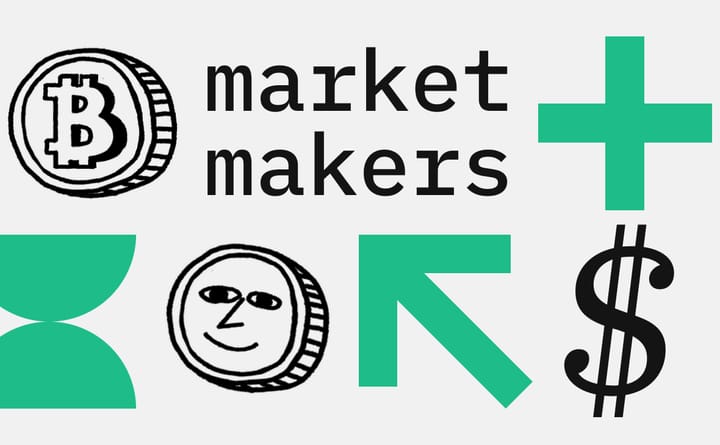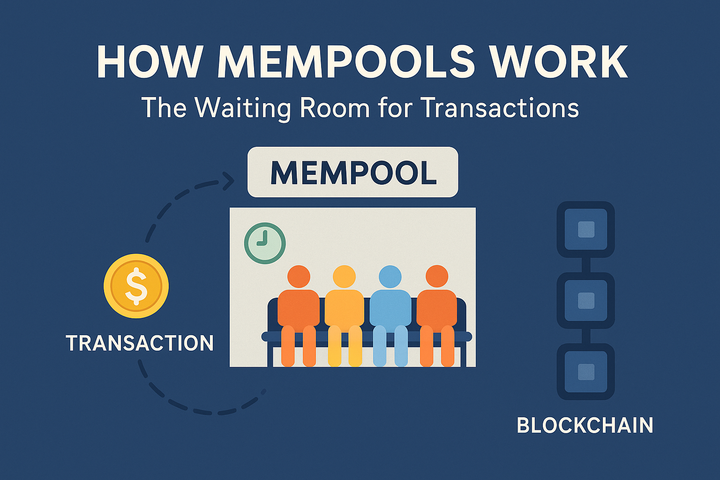The Digital Ethos: Forging Trust and Credibility in Web3
Introduction: The Trust Paradox in Decentralized Finance
The decentralized finance (DeFi) movement emerged with the promise of a financial system free from intermediaries, built on transparent and immutable blockchain technology. Yet, this very "trustless" nature presents a paradox: how do participants trust each other when there's no central authority to vouch for them? The crypto landscape is rife with challenges, including fragmented liquidity, capital inefficiency, and the persistent threat of fraud and "rug pulls." Traditional financial systems rely on established institutions and credit scores to assess trustworthiness, but in the pseudonymous world of blockchain, new mechanisms are needed. This is where the concept of on-chain reputation and decentralized identity systems comes to the forefront, offering a novel approach to building credibility and fostering reliable interactions within the crypto ecosystem. These systems aim to create a verifiable history of behavior, allowing participants to make informed decisions and engage with confidence.
I. The Imperative of Trust in a Trustless World
The Decentralization Illusion and Its Challenges
While DeFi aims to eliminate centralized intermediaries, <a href="https://www.bis.org/publ/qtrpdf/r_qt2112b.pdf">a "decentralization illusion" often exists, as some level of centralization becomes inevitable for governance and operational decisions.</a> Structural aspects of blockchain consensus mechanisms can also lead to a concentration of power, challenging the ideal of complete decentralization. This inherent need for governance means that even in decentralized systems, certain entities or groups may wield significant influence. Furthermore, the pseudonymous nature of blockchain, while offering privacy, makes it difficult to assess the creditworthiness of borrowers in decentralized lending, often leading to the need for over-collateralization. This can be capital-intensive and contribute to downward price pressures if collateral is liquidated during market stress. The collapses of several cryptoasset trading platforms in 2022, such as Terra, Celsius, and FTX, further highlighted the vulnerabilities and the critical need for robust trust mechanisms in the absence of traditional regulatory oversight.
Navigating Risks and Information Asymmetry
The crypto ecosystem faces various risks that undermine trust, including protocol risks, oracle risks, and systemic risks. Beyond these technical vulnerabilities, information asymmetry is a significant hurdle. It's often challenging for users to discern the legitimacy and reliability of projects, teams, and other participants. This lack of transparency can lead to issues like "rug pulls," where malicious actors drain liquidity, leaving token holders with worthless assets. The absence of clear, verifiable information about a project's team, its roadmap, and its smart contract security can deter serious investors and foster an environment of caution. Therefore, building trust in crypto projects requires proactive measures such as securing liquidity locks, implementing token vesting schedules to prevent early investor dumps, and undergoing rigorous smart contract audits by reputable third parties. These practices are crucial for mitigating risks and signaling a project's long-term commitment.
II. On-Chain Reputation Systems: Building Digital Ethos
Defining On-Chain Reputation
<a href="https://www.gate.com/learn/articles/what-is-on-chain-reputation/8601">On-chain reputation systems are a transformative concept in the blockchain space, designed to track and manage the trustworthiness of users within a decentralized network.</a> Unlike centralized systems where reputation information can be easily manipulated or deleted, blockchain-based reputation records are permanently stored on a distributed ledger, ensuring their integrity and reliability. These systems assign numeric reputation scores to participants based on their actions and feedback from others, reflecting their reliability and behavior according to predefined criteria. For instance, positive interactions and successful transactions can boost a user's score, while negative actions might lower it. This automated and transparent approach incentivizes good behavior and deters misconduct, making it easier for users to make informed decisions and interact with confidence.
Key Features and Mechanisms
The functionality of on-chain reputation systems is built upon several core features:
- Reputation Scores: Numeric values assigned to participants based on their behavior and performance.
- Data Collection: Mechanisms to gather data from user interactions, transactions, and feedback.
- Evaluation Criteria: Clear rules and metrics for calculating scores, ensuring transparency and consistency.
- Feedback Mechanism: Allowing users to provide feedback on interactions, which influences scores.
- Penalties and Rewards: Incentivizing good behavior and deterring misconduct through automated rewards for high scores and penalties for low ones.
- Governance: Community or stakeholders set rules for changing the reputation system.
- Transparency and Security: All reputation data is publicly verifiable on the blockchain, and cryptographic primitives ensure its integrity.
These features collectively create a self-regulating environment where trust is earned through verifiable actions, reducing the need for traditional intermediaries.
Examples of On-Chain Reputation in Action
<a href="https://www.gate.com/learn/articles/what-is-on-chain-reputation/8601">Several projects are actively building and utilizing on-chain reputation systems to enhance trust and credibility within the crypto ecosystem.</a> For instance, <a href="https://www.gate.com/learn/articles/what-is-on-chain-reputation/8601">Orange Protocol allows users to build trust-based social proofs from their social interactions, transaction history, and community participation, moving beyond metrics based solely on wallet balance.</a> <a href="https://www.gate.com/learn/articles/what-is-on-chain-reputation/8601">Krebit enables users to prove their identity without revealing it, leveraging zero-knowledge proofs for privacy-preserving identity verification.</a> <a href="https://www.gate.com/learn/articles/what-is-on-chain-reputation/8601">Other notable examples include Metopia, which creates a data-based user reputation system for governance and rewards, and SourceCred and SOURC3, which help communities incentivize contributors and manage on-chain reputation.</a> These platforms demonstrate the diverse applications of on-chain reputation, from assessing developer trustworthiness to facilitating decentralized lending based on behavioral history rather than just collateral.
III. Decentralized Identity (DID) as the Foundation
DID: Empowering User-Controlled Identity
<a href="https://osl.com/hk-en/academy/article/how-will-decentralized-identity-expand-on-chain-reputation-value-what">Decentralized Identity (DID) has emerged as a transformative concept, reshaping how individuals and entities establish and manage their online identities.</a> By leveraging decentralized mechanisms, users gain control over their personal data, moving away from centralized identity systems that often lead to privacy concerns and data breaches. DID utilizes blockchain technology to create a secure, user-controlled identity, fostering user autonomy over personal information and reducing reliance on third-party identity verification services. This shift significantly enhances the security of personal information and builds a robust foundation for more reliable on-chain reputation systems. When individuals can prove their identity and associated achievements on-chain through verified credentials, it creates a more trustworthy environment for digital interactions.
Impact on Financial Inclusion
The combination of decentralized identity and reputation systems holds immense potential for unlocking financial inclusion, particularly in emerging markets where traditional identity verification and credit history are significant barriers. <a href="https://ont.io/news/1118/How-Decentralized-Identity-and-Reputation-Systems-can-Unlock-Financial-Inclusion">DID systems, such as ONT ID, allow individuals to selectively disclose information using zero-knowledge proofs, proving who they are without exposing everything about themselves.</a> This is crucial in regions where rigid Know Your Customer (KYC) processes often exclude people from financial services. By enabling individuals to access DeFi lending, savings platforms, and other digital financial tools without being at the mercy of outdated bureaucracy, DID can bridge the gap for the unbanked and underbanked. Decentralized reputation systems further enhance this by allowing DeFi lenders to assess a borrower's track record based on responsible interactions with previous loans, DAOs, or community participation, rather than solely on asset holdings. This reduces reliance on over-collateralization, making DeFi lending accessible to a broader audience.
IV. Mitosis: A Case Study in Building Credibility
Mitosis's Approach to Trust and Transparency
Mitosis, a modular Layer 1 blockchain focused on Ecosystem-Owned Liquidity (EOL), exemplifies how a project can integrate trust and credibility into its core design. <a href="https://docs.mitosis.org/assets/files/mitosis-litepaper-6e8de95ce2bb14f8c2d2ffc8c272b9f3.pdf">Its vision centers on building a programmable, sustainable liquidity infrastructure that fosters a lasting, community-driven DeFi ecosystem, moving beyond transient "mercenary capital."</a> This commitment to community ownership inherently builds trust by aligning incentives and promoting long-term engagement. <a href="https://crypto-fundraising.info/projects/mitosis/">Mitosis has already demonstrated significant traction, securing $7 million in funding from prominent investors like Amber Group and Foresight Ventures, and achieving over $80 million in TVL within its first three months, signaling market confidence.</a>
Ecosystem-Owned Liquidity (EOL) and Governance
A cornerstone of Mitosis's trust-building strategy is its <a href="https://support.bitrue.com/hc/en-001/articles/41380420224153-Mitosis-Airdrop-How-to-Earn-MITO-Points-and-Unlock-Rewards">Ecosystem-Owned Liquidity (EOL) framework.</a> EOL pools liquidity from individual retail providers through a decentralized autonomous organization (DAO) structure, empowering small liquidity providers to collectively replicate institutional-level liquidity. This collective approach fosters a more equitable and efficient market. <a href="https://docs.mitosis.org/assets/files/mitosis-litepaper-6e8de95ce2bb14f8c2d2ffc8c272b9f3.pdf">The governance of EOL relies heavily on miAsset holders, who wield governance rights over liquidity allocation decisions.</a> <a href="https://www.binance.com/en/square/post/14984132906850">This decentralized control over capital allocation, facilitated by the Morse DAO, ensures that decisions are community-led and transparent, reducing reliance on centralized entities and building trust through shared ownership and responsibility.</a>
Strategic Partnerships and Security Audits
Mitosis further enhances its credibility through strategic partnerships and a commitment to security. <a href="https://www.binance.com/en/square/post/14984132906850">Collaborations with established interoperability solutions like Hyperlane and Morse are crucial for enabling seamless liquidity movement across diverse blockchain networks, addressing fragmentation and enhancing capital efficiency.</a> <a href="https://www.binance.com/en/square/post/23684249034578">The partnership with Morph L2 through initiatives like "Zootosis" demonstrates its commitment to extending its liquidity infrastructure.</a> Furthermore, <a href="https://threesigma.xyz/smart-contract-security-audit">Mitosis prioritizes security, as evidenced by the availability of a smart contract security audit report from July 2024 by Three Sigma.</a> Such audits are indispensable for identifying and mitigating vulnerabilities, providing a critical layer of trust for users and investors.
Engaging the Community: The Expedition Testnet
<a href="https://cointelegraph.com/crypto-bonus/bonus-page/claim-early-access-to-mitosis-testnet-and-earn-mito-rewards/">Mitosis actively builds community trust and engagement through its gamified Expedition Testnet, often referred to as the "Game of Mito."</a> <a href="https://support.bitrue.com/hc/en-001/articles/41367171655961-What-is-the-Mitosis-Airdrop-Everything-You-Need-to-Know">This program incentivizes early adoption and active participation by rewarding users with MITO Points for providing liquidity, completing tasks, and engaging with the platform.</a> <a href="https://support.bitrue.com/hc/en-001/articles/41367171655961-What-is-the-Mitosis-Airdrop-Everything-You-Need-to-Know">A significant portion of the airdrop allocation (70%) is determined by these points, creating a vested interest among early adopters.</a> <a href="https://cointelegraph.com/crypto-bonus/bonus-page/deposit-eeth-or-weeth-into-mitosis-to-earn-mito-points/">The potential for multi-airdrops from partners like EigenLayer and ether.fi further amplifies incentives.</a> This transparent and interactive approach to community building fosters loyalty and demonstrates a commitment to long-term growth, which are vital for establishing a strong reputation in the crypto space.
V. The Road Ahead: Evolving Trust Mechanisms
Technological Advancements in Reputation Systems
The future of on-chain reputation systems is poised for significant technological advancements. <a href="https://www.gate.com/learn/articles/what-is-on-chain-reputation/8601">The continuous development of privacy-enhancing technologies like Zero-Knowledge Proofs (ZKPs), Fully Homomorphic Encryption (FHE), and Multi-Party Computation (MPC) will allow reputation systems to better balance transparency and privacy.</a> <a href="https://www.gate.com/learn/articles/what-is-on-chain-reputation/8601">For example, ZKPs can enable users to prove their creditworthiness without disclosing specific behavioral details, making the system more secure and privacy-friendly.</a> Furthermore, the integration of Artificial Intelligence (AI) and Machine Learning (ML) models will provide more precise behavioral analysis and credit assessment, helping to prevent fraud and anticipate user risk. However, ensuring the interpretability and fairness of these AI models will be a crucial challenge.
Standardization and Interoperability
As the multi-chain ecosystem matures, on-chain reputation systems will need to integrate more deeply with Layer 2 networks, sidechains, and application-specific chains. This will necessitate the development of common standards for on-chain reputation, including data formats, scoring frameworks, and cross-chain reputation identity protocols. Modular deployment will allow reputation modules to be used as plug-and-play components, easily integrated into DeFi, NFT, DAO, and GameFi scenarios, enhancing interoperability and flexibility. This standardization will reduce fragmentation and help establish a unified decentralized reputation network, allowing reputation to be easily transferred and recognized across different platforms.
Ongoing Challenges and the Path to Sustainability
Despite the promising advancements, challenges remain for building robust and sustainable trust in the crypto ecosystem. Regulatory uncertainty continues to be a significant hurdle, as governments grapple with how to oversee decentralized finance while balancing innovation with consumer protection. The need for continuous user education is also paramount, as widespread adoption of complex decentralized identity and reputation systems requires a high degree of digital literacy. Ensuring the long-term sustainability of blockchain projects, including their tokenomics, requires detailed transparency on token supply, distribution, and vesting schedules. <a href="https://chainforce.tech/learn-tokenomics/red-flags-in-tokenomics/">Issues like unequal token distribution, inflationary pressures, or sudden supply shocks from large unlocks can significantly impact market stability and investor confidence.</a> <a href="https://threesigma.xyz/smart-contract-security-audit">Continuous security audits, agile adaptation to market conditions, and effective decentralized governance are all critical for building a resilient ecosystem and maintaining trust.</a>
Conclusion: A More Trustworthy Decentralized Future
The crypto ecosystem is undergoing a profound transformation, moving beyond its initial "trustless" ethos to embrace sophisticated mechanisms for building verifiable reputation and credibility. On-chain reputation systems, underpinned by decentralized identity, are paving the way for a more transparent, equitable, and inclusive digital financial landscape. By recording immutable behavioral data, empowering users with control over their identities, and fostering community-driven governance, these systems are addressing the inherent challenges of decentralization. Projects like Mitosis demonstrate a proactive approach to integrating these principles, leveraging Ecosystem-Owned Liquidity, transparent governance through Morse DAO, strategic partnerships, and robust community engagement to build a foundation of trust. As technology advances and standardization efforts gain momentum, the crypto world is steadily evolving towards a future where digital interactions are not just permissionless, but also inherently trustworthy, unlocking unprecedented opportunities for global financial participation and innovation.



Comments ()